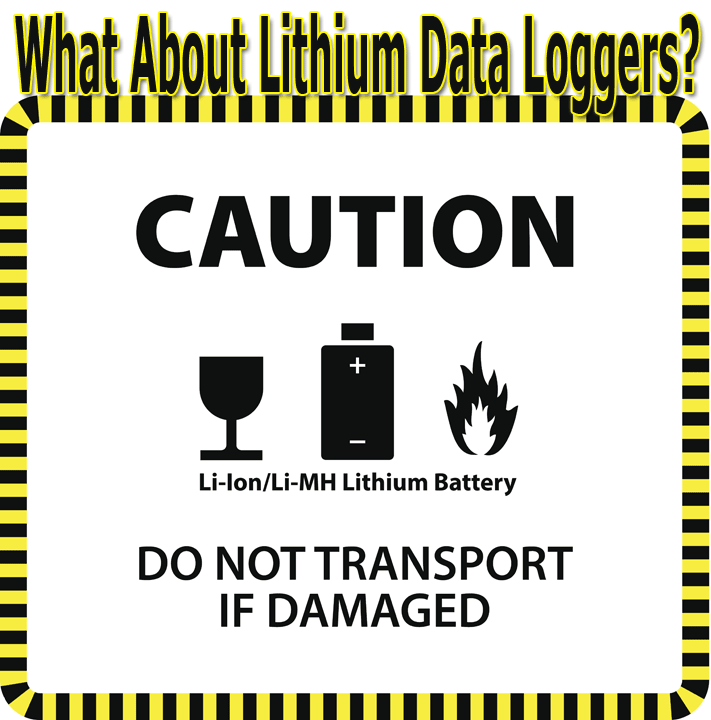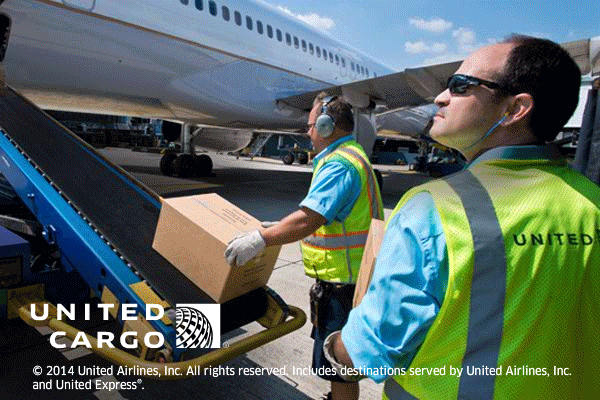
By and large, the shippers,
handlers, and distributors of Lithium batteries are likely tired of
ongoing and incomprehensive changes pertinent to the regulatory requirements
for those oh-so troublesome batteries.
At this point FT readers are
probably up to their ears in different opinions about the hazard potential
of these batteries, and regulators and industry associations such as
IATA and PRBA have not always done their best to clarify the issues
at hand.
Well, if you can stand to hear more about
it—here’s some further information as the assault &
battery continues.
Hope Floats
The shipping community, or at least 99.25%
of the aforementioned, is obliged to follow the most recent edition
of the IATA Dangerous Goods Regulations, (IATA DGR) and in particular
to the Packing Instructions 965 to 970, which deal with the requirements
applicable to the various types and forms of Lithium metal and Lithium
Ion batteries.
DGR Rules & Regulations
These rules are consistent with the Technical
Instructions for the Safe Transport of Dangerous Goods by Air published
by ICAO, and thus form the recognized legal basis for the international
transport of dangerous goods by air.
Some Straight Talk Helps
The preface of the IATA Dangerous Goods
Regulations is quite precise, stating “The IATA Dangerous Goods
Regulations are published by the IATA Dangerous Goods Board pursuant
to IATA Resolutions 618 and 619 and constitute a manual of industry
carrier regulations to be followed by all IATA Member airlines.
“This edition of the IATA Regulations
is based on the requirements of Annex 18 to the Convention on International
Civil Aviation (Chicago, 1944) and the 2013–2014 Edition of the
associated Technical Instructions for the Safe Transport of Dangerous
Goods by Air (Doc 9284—AN/905), including addenda to the 2013–2014
Technical Instructions, adopted by the Council of ICAO and published
by ICAO.”
IATA DGR continues with some self-appraisal,
explaining that “in developing its Regulations, IATA has drawn
on its extensive experience to give special attention to the format
and wording of these Regulations to make this a readily understandable
and easy-to-use manual.”
But some viewing the manual quickly recognize
that by comparison with the ICAO TI this IATA document is neither “readily
understandable” nor “easy to use.”
Alas, once upon a time structure, format,
and comprehensive examples were always something for which IATA’s
manuals—not limited to the Dangerous Goods regulations—were
prized.
IATA has—for good reasons—imposed
additional requirements on the transport of dangerous goods, explaining,
“there are certain differences between the IATA and ICAO regulations
which stem from operational considerations and result in a regulatory
regime which is necessarily more restrictive than the ICAO requirements.”
These differences are identified by the
“pointing finger” symbol appearing in the margin.
The IATA Regulations also incorporate
additional material of “practical assistance to users.”
For obvious reasons, since the IATA Dangerous
Goods is presented as a technical manual, a multitude of standards and
regulatory documents are referenced throughout the piece, such as standards
and criteria from the UN, WHO, and ISO as well as certain national standards
such as ASTM (American Society for Testing Materials, DIN (Deutsches
Institut fuer Normung), and others, where the use of such standards
is permitted or required.
Subsequently, for the construction standards
applicable to Lithium batteries, the IATA DGR (as well as the ICAO TI)
refer to subsection 38.3 of part III of the UN Manual of Tests and Criteria.
One would expect that where the legal
source—the ICAO TI—is not clear or does not offer sufficient
references, IATA might make use of their privilege to put in some additional
explanation or reference, but that does not appear to be the case.
Powering Data Loggers
One often-overlooked issue pertinent to the
provisions applicable to Lithium batteries is the problem of so-called
“active devices” and PED’s (Personal Electronic Devices).
More often than not, perishable cargoes
(such as vaccines, pharmaceuticals, blood and live organs, as well as
perishable foodstuff) are shipped using small data loggers, which record
ambient conditions such as temperature, moisture, and pressure to detect
any deviation from the requirements applicable to the particular cargo.
Indeed, these data loggers are an indispensable
tool, particularly for pharma shippers, and help to maintain safe conditions.
Since small lithium batteries (typically
the “excepted” Lithium-metal type addressed in section II
of Packing Instruction 970) power most of these data loggers, both the
IATA DGR and the ICAO TI make the following provision:
“Each package containing more than
four cells or more than two batteries installed in equipment must be
labelled with a lithium battery handling label (Figure 7.4.H), except
for button cell batteries installed in equipment (including circuit
boards).”
You may have to read the aforementioned
sentence a couple of times, but in essence it means that any gadget
or device incorporating two or less batteries or four or less cells
of the so-called “excepted” type are not subject to any
declaration requirement, meaning there is no requirement to label, mark,
or otherwise indicate the presence of these batteries anywhere on the
transport documents.
While that befits the needs of corporate
shippers—laptop computers, for example, usually meet these requirements—this
provision causes a multitude of problems to GHA and airline staff and
is actually detrimental to the thought of safety, since one core issue
taught in any dangerous goods training is the importance of detecting
hidden or undeclared dangerous goods, and subsection 2.2.2 of the IATA
DGR consequently stipulates:
“Cargo declared under a general
description may contain hazardous articles that are not apparent.
“Such articles may also be found
in baggage. With the aim of preventing undeclared dangerous goods from
being loaded on an aircraft and passengers from taking on board those
dangerous goods which they are not permitted to have in their baggage,
cargo and passenger acceptance staff should seek confirmation from shippers
and passengers about the contents of any item of cargo or baggage where
there are suspicions that it may contain dangerous goods.”
The IATA DGR goes on in 2.2.4 to require
that where shippers offer packages with descriptions such as electronic
devices or electricals, they “must be asked to check their consignments
against the class definitions and Special Provisions in the Regulations
and confirm by endorsement of the ‘Air Waybill’ that no
part of the package contents is dangerous. e.g. ‘Not restricted’.”
In practice this means that GHA and airline
more often than not must stop consignments with Lithium batteries, which
do not require declaration because there is nothing to distinguish these
from undeclared dangerous goods.
This clearly wastes resources on the GHA
and airline side—resources that might be better spent elsewhere
in the interest of a good safety regime.
But there is more.
Data loggers are active, or in operation,
throughout the flight.
This is also addressed in Packing Instruction
967 (applicable to Lithium Ion batteries contained in equipment) and
Packing Instruction 970 (applicable to Lithium metal batteries contained
in equipment). Here, IATA states:
“Devices such as radio frequency
identification (RFID) tags, watches and temperature loggers, which are
not capable of generating a dangerous evolution of heat, may be transported
when intentionally active.
“When active, these devices must
meet defined standards for electromagnetic radiation to ensure that
the operation of the device does not interfere with aircraft systems.”
So the question must be asked: which standards?
Neither ICAO nor IATA elaborate on that
point, and the lack of clarity leaves shippers, GHAs, and airlines in
regulatory limbo.
Put another way, in pertinent regulatory
guidance provided by their dangerous goods department IATA acknowledges
that such data loggers, when transported to, from, and through the U.S.
must comply with applicable FAA standards.
But for reasons unknown they have failed
to give similar recognition to the harmonized standards of the European
Community (EC).
EC Directive 2004/108/EC— which
is binding in all 27 EC member states—requires that for such “active
devices,” the electromagnetic emissions emitted by such devices
comply with the thresholds’ stipulated therein and be certified.
Another EC directive, 2014/965/EC, in
sections Cat.Gen.MPA140 and 200, states:
“The operator shall not permit any
person to use a portable electronic device (PED) on board an aircraft
that could adversely affect the performance of the aircraft’s
systems and equipment, and shall take all reasonable measures to prevent
such use.”
These limitations also apply to active
devices being carried as or within cargo, and a number of European states
have further requirements in their national legislation applicable to
electronic devices being active during flight and not being part of
the aircraft’s equipment.
Proactive Manufacture
Some manufacturers of data loggers such as
SensiTech, Inc. have, for the sake of meeting the multifold and onerous
regulatory requirements in different states, been quite proactive and
provide extensive documentation and support to the user community.
Others, however, simply distribute their
products which are usually shipped undeclared —quite in accordance
with regulatory guidance given by IATA— since indeed their dangerous
goods components do not require declaration, but the fact of them being
active would—at least for transport to, from, and through Europe—require
the consent of the airline and sometimes notification to the pilot in
command so as to enable him to carry out his right of refusing passengers
or cargoes.
While the latter is usually a rather theoretical
option, it is nevertheless a requirement with which airlines must comply.
And since these data loggers do not come
cheap, they must somehow be returned to the shipper. More
often than not this is done by simply mail shipping them undeclared,
although very few states permit their designated postal operators to
mail ship excepted lithium batteries contained in equipment—the
U.S. being one of the few countries where such practice is permitted.
From an overly expensive $300 USD manual
such as the IATA Dangerous Goods Regulations, one would expect answers—or
at least references—to the questions and issues pertinent to so
pressing an issue.
Well, if wishes were knishes, it seems
reasonable to surmise that at the very least, IATA still has some homework
to do.
Jens







